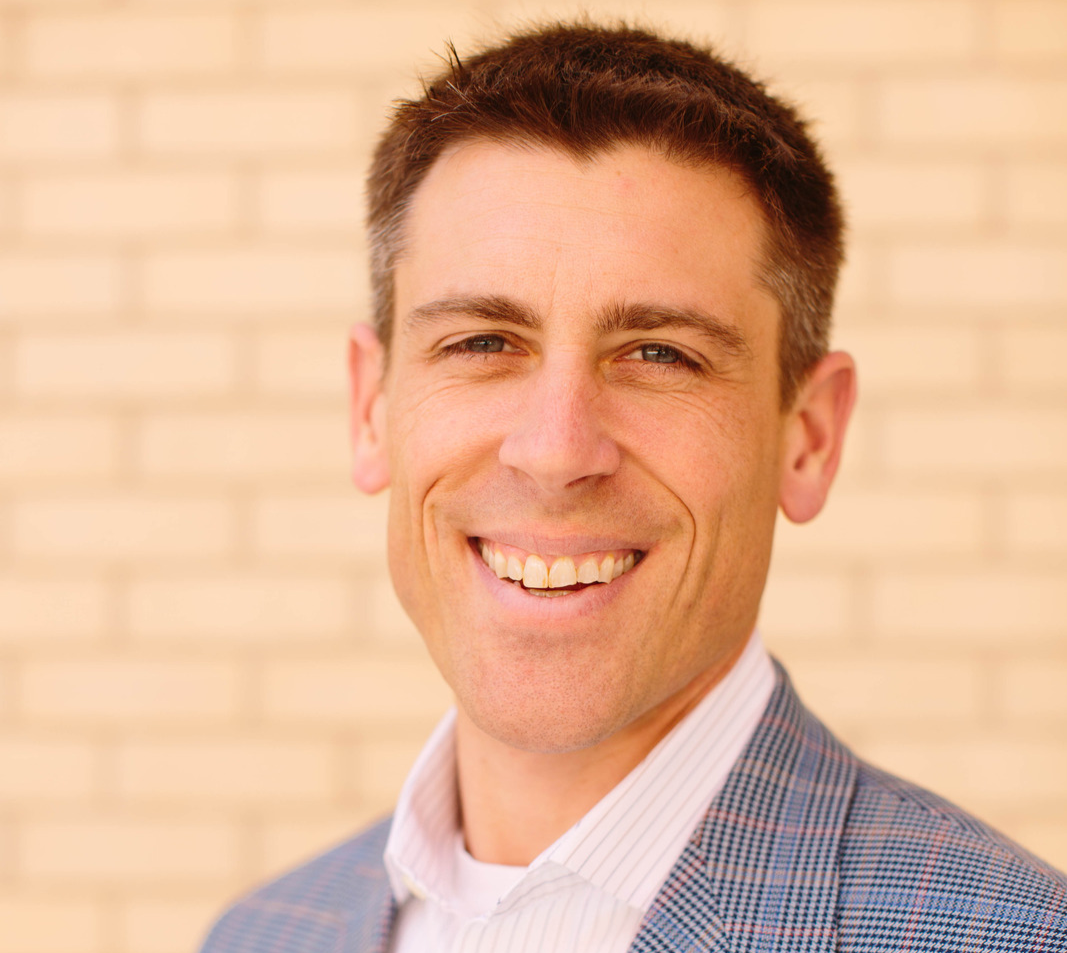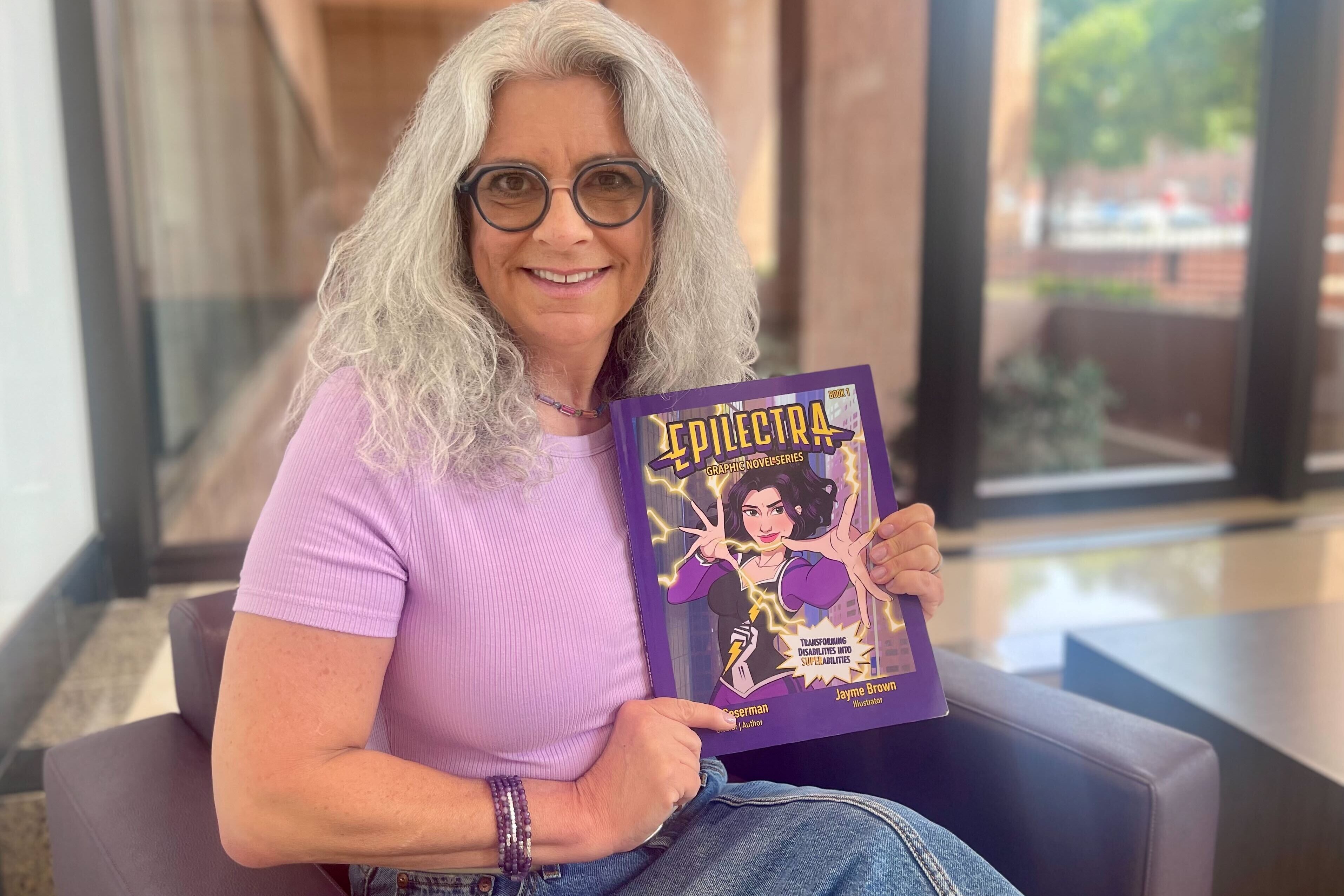
KRCC News sent detailed surveys about some of the most critical issues facing city leaders, to the candidates running for the at-large council seat on the Colorado Springs City Council. The short biography below is gleaned from the candidate's response, their website and other sources.
Colorado Springs native Brian Risley is the principal architect for CRP Architects. He’s led the El Paso County Planning Commission and Pikes Peak YMCA Regional Transportation, as well as serving on the Pikes Peak Regional Transportation Authority and other local groups. Risley’s priorities include making housing and other costs more affordable, supporting first responders and limiting government overreach into the realm of private business. He has a bachelor’s degree in architecture from the Rhode Island School of Design.
Role and vision
What is your elevator pitch for why voters in Colorado Springs should choose you as the next at-large council representative?
As a native of Colorado Springs, I understand the challenges and opportunities we have faced in the past. I understand our culture and how we can preserve and honor our past as we continue to evolve and grow. I will focus on efforts that improve the quality of life and vitality of our region. As a small business owner, I will bring a business mindset to the operational and budgetary aspects of City Council. I will advocate for limiting government overreach into the realm of private business. As an architect and chair of the El Paso County Planning Commission, I understand land use and planning issues better than anyone and will bring my wealth of experience to bear. As a father and husband, I am focused on efforts that make a difference for hard working families here. I am not a career politician, I have no political aspirations and I am not seeking election for personal gain, notoriety, or influence.
What do you see as the role and/or function of city government?
Local government should be focused on providing core municipal services that cannot be provided by the business or the non-profit sector. Core services include public safety, emergency management, transportation and transit infrastructure, public works, utilities and parks and open space. Historically, Colorado Springs has funded these efforts ahead of any other departments or programs and I intend to keep our budget and efforts as a City government focused squarely on these core efforts. By focusing on these key areas, we will continue to set the stage for economic growth, affordability, and safe, welcoming environments for residents to live, work and play.
What is the number one challenge facing the next council of Colorado Springs, and how would you address it?
Because Colorado Springs is a great place to live, we will continue to attract new businesses and residents. We will continue to deal with growing pains as a result and many of the implications that come from our success will be a challenge. We can address this by encouraging smart growth and land use planning, balancing water, gas and electricity demands with resources, and dealing with traffic and road infrastructure. By focusing City resources on the core services that a city should provide, we will be able to keep the cost of doing business as low as possible, allowing the free market to respond in a balanced way.
What is your vision for Colorado Springs in the next 25 years, and what realistic policies do you propose to get us there?
I envision Colorado Springs continuing to be a premier location to establish a business, raise a family and enjoy our incredible natural surroundings. By 2045, the Pikes Peak Region is projected to be home for over one million people and being strategic and smart about how we grow will impact the outcome many years from now. I envision a strong, vibrant downtown core with many more residences, shops, cultural attractions and amenities. I envision a redeveloped Drake Power Plant site that could be a gateway to that part of the city. I envision densification of housing where appropriate to increase affordability, connectivity, diversity and economic opportunity. I envision a city that continues to embrace outdoor recreation and celebrates the beauty around us. I envision a safe, welcoming and vibrant region that provides opportunities for all to prosper. Many of the policies we have in place now will achieve this because we are focused on economic expansion and reduction of government burden on the business and non-profit sectors. One area of improvement is public safety and policies that support funding of police, fire and emergency management efforts will be key.
Law enforcement / Public Safety
What is the most pressing public safety issue facing the city and how would you address it?
Unfortunately there is not just one top public safety issue in Colorado Springs. We have many areas of concern including the homicide rate, suicides, vehicle thefts, homelessness and violent crime. Many of these stem from similar root causes, namely drug addiction and mental health. The other factor at play is the unfortunate approach from State leadership that allowed an environment in the state for criminal activity to spread. The good news is that many of our problems are driven by a few key issues and I advocate for addressing the heart of the problem rather than just working on a superficial level. In other words, we need to be proactive and focus on treating addiction and mental health issues before they become chronic or severe. We need to funnel resources and attention to schools, military programs and the many non-profits who work tirelessly to identify and engage with people who are struggling before they turn to crime. We need to push back where we can at the state level and let our state leaders know we do not agree with their stance on criminal activity. We need to outwardly express that criminal activity is not acceptable in our community.
What is your response to the findings from the audit on how the Colorado Springs Police Department uses force? What, if any, changes need to be made to the way CSPD operates?
After more than a year of studying police policies and practices, the audit found no major red flags and only room for minor improvement. There were less than a dozen recommendations for improvements that came from the audit team, and many have already been thoroughly discussed or implemented by CSPD. This is a great example that despite some negative public opinions, our City is very well run at all levels and does a good job of implementing best practices in every area.
What do you think of the current relationship between the Colorado Springs Police Department and the public? Is it acceptable or should more be done, and if so, what?
It is unfortunate that law enforcement is not well respected. The dedicated men and women that put their lives on the line literally every time they go to work should garner our respect in the same way that the military community is viewed. This is part of the reason why we have a hard time recruiting and retaining officers. Of course there is always room for improvement, but CSPD has typically been one of the most transparent and generally trusted agencies in the law enforcement world. I would encourage citizens to participate in ride-alongs to see and experience the situations officers face every day.
What do you think of the Law Enforcement Transparency and Advisory Commission (LETAC)? What would you do differently with this commission or its purpose if given the chance?
We have many citizen oversight committees and boards, and in general, I think these are great opportunities for citizens to get involved, have a voice and participate in government. As a member of City Council, I look forward to the opportunity to appoint members of these bodies. LETAC is a good example of a commission focused on specific issues and is an appropriate way to bring forward ideas and thoughts for City Council to entertain.
Emergency officials are implementing new notification software and other measures in the case of a wildfire or other hazard, but some residents say that isn’t enough. How would you address their concerns?
One of the criticisms about the notification system is that it allegedly only warns residents to evacuate but does not provide any specific information about where to go, how to evacuate or any other specifics. I have not researched the system, but if these allegations are true, perhaps the system could be used to provide more details and specifics. While it is important for the city to have an overall emergency management plan, it is also important for people to be aware of risks in their specific area and have their individual plans in place.
Growth
How do you define sustainable and responsible growth, and is the city successful in growing responsibly and sustainably?
The tenet of sustainable growth is the alignment of development with resources to meet a market demand. We cannot grow faster than the market dictates and we cannot outgrow our resources. Specific resources that need to be balanced include roadway infrastructure, water, electricity and community infrastructure. Responsible growth (I call it smart growth) focuses on developing the right uses in the right locations and ensuring the highest and best use of property. This includes both commercial and residential development. The other aspect of smart growth is having a strategy or gameplan in place to direct development. After many years of functioning without updated, comprehensive city and county master plans, both municipalities finally have well conceived master plans in place. These serve as the framework to direct smart growth and are essential to ensuring we develop in a reasonable, predictable and thoughtful manner. Because we adopted these documents, I believe the region is poised to develop responsibly and sustainably for the foreseeable future.
What different approach would you take, if any, to help address housing affordability?
Several aspects of housing affordability factor into this issue. The current procedural burdens and significant timelines for approval are delaying completion of housing projects. Speeding up this process while still ensuring compliance with land development codes will help bring housing products to the market faster and hopefully ease the demand. Lowering the financial burden on development will also allow builders to bring products to the market at a lower cost. Perhaps one of the most powerful tools in addressing housing affordability is density. Encouraging more dense development where appropriate means more housing units can take advantage of the same public infrastructure which means less cost per unit. Being strategic about infill developments and alternative housing options such as tiny homes, additional dwelling units and other innovative solutions, where appropriate, will also help.
Infill is identified in the PlanCOS master plan as a key strategy for the city moving forward, and yet, council is currently debating annexations. How do you define infill and how do you balance it with annexations?
Infill and annexations are both important tools to furthering a vibrant, growing city and both fill specific needs. The market will largely drive the balance between the two, although the city needs to create an environment where both modes can be supported.
What do you think of the recent water service extension ordinance passed by council and signed by the mayor aimed at limiting annexations based on water supply? What would you have done differently?
The water ordinance is a complex issue and I think City Council rushed to a decision without seeking robust community input first. If allowed to stand as adopted, the ordinance will cause unintended consequences. I think this issue needs to be further explored and discussed.
How do you balance maintaining the character of Colorado Springs with the need for development? What is the character of Colorado Springs?
I have spent much of both my professional and volunteer time trying to balance the need for economic growth and vitality with the desire to maintain the history, tradition and character of Colorado Springs. Many people have chosen to move here because of the incredible beauty and opportunity for outdoor recreation. We must maintain these characteristics which tie directly to quality of life while also continuing to expand the economy. There is no simple answer for how best to balance this and every decision City Council faces must be viewed with this balance in mind. As a life long resident of Colorado Springs, I would describe the character of our community as one rooted in tradition and the spirit of the west while also open to, and excited about, the opportunities of the future. In the past, there were times where we resisted change and sometimes we still think of ourselves as a small town. However, we are actually a big community at this point and need to grapple with the realities that come with our size. We are a big city that still maintains a small town feel and are known for being family friendly. We need to maintain this feel as we continue to grow.
Transportation / Infrastructure
What is the most important infrastructure project needed in Colorado Springs right now, and how would you address it?
Since we neglected our transportation system for so long, there are a myriad of needs that still need to be addressed and no single project will resonate as the top priority for every citizen – that matter largely depends on where you live or work. Once we decided as a community to invest in transportation through efforts like the City’s 2C initiative or the region’s PPRTA, we have been making good strides toward repairing and expanding our infrastructure. We need to continue these investments because good quality roads tie directly to the quality of life, the ability to retain and attract employers, the ability for the military to effectively support its operations, and the productivity of anyone trying to get from point A to point B.
How do you feel about the transportation options currently available in Colorado Springs? What plans, if any, do you have to increase options for reliable public transportation?
The reality with a community like Colorado Springs is that we are too dispersed and lack the density for major public transit options to be viable and sustainable. We have always struggled to attract choice ridership on Mountain Metro despite numerous attempts and incentives and this will continue to be the case for the foreseeable future. Efforts to augment public transit with things like Pike Ride, the scooter program and the downtown shuttle service give people options in certain areas of town where there tends to be more density.
What are your thoughts about expanding the use of active transportation like bicycles or walking? Should it be a primary focus and if so, what should be done?
In certain situations or parts of town, expanding active transportation options has proven to be a positive thing and should be encouraged where it makes sense. Densely populated areas with close connections between housing and retail or employment centers are often good candidates. Being realistic about the balance of active transportation versus motorized transportation is also important and should be considered with intentionality.
Parks & Open Space, Economy & Other
General Palmer's original vision for the city of Colorado Springs was that of a planned community, built around its natural beauty and environment. Do you agree with that vision, and if so, how do you plan to stay true to it?
Palmer’s vision is still alive and well today. For the most part, we have balanced preservation of our incredible surroundings with the need to grow. Through continued intentional and thoughtful decisions, we can continue to honor his vision and maintain the character of our community.
What do you see as the current state of economic diversity, and where does the city have the opportunity to grow?
For many years, Colorado Springs was dependent on a small handful of very large employers and sectors. Over time, we have diversified and expanded into some great areas. The key is to continue providing a favorable business climate where employers see our area as a cost effective and efficient place to conduct business and one where their employees will want to live.
Is the city doing enough to address the issue of people experiencing homelessness? What, if anything, would you do differently?
By comparison to other communities of our size as well as our neighbors along the front range, we have done a good job addressing homelessness, but we have a lot of work yet to do. Addressing the root causes of homelessness such as drug abuse and mental illness is absolutely key as opposed to only treating the superficial issues. There are many non-profit agencies in Colorado Springs that are working to intervene and assist residents before their issues become chronic or so significant that they result in homelessness and the City should encourage their efforts.
What is your stance on if and when to ask voters to retain funds that exceed the cap imposed by the Taxpayers Bill of Rights (TABOR)?
When TABOR refunds exist, spending them on core government services is the only acceptable use - this includes services like law enforcement, public safety, transportation system improvements, stormwater management, parks, etc.
Who are your top three campaign donors?
I have received broad support from many in the business community, colleagues, friends, and family. There have not been three top donors specifically.
Quick responses
Would you support city councilors receiving a living wage or salary as opposed to the annual stipend of $6,250?
No.
Do you support the legalization of recreational marijuana in Colorado Springs?
No.
Would you support creating an independent board for Colorado Springs Utilities, rather than having council serve as the board?
No.
Do you support Front Range Rail?
Yes.
Do you support extending Constitution Avenue?
No.
Is the city adequately addressing climate change and adaptation?
Yes.
Do you support the ballot measure that extends the TOPS sales tax?
Yes.









